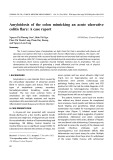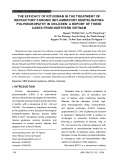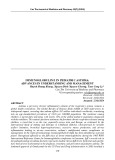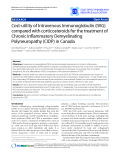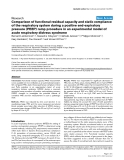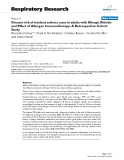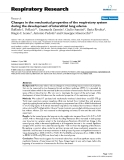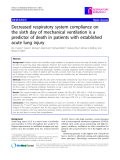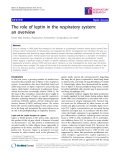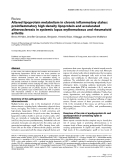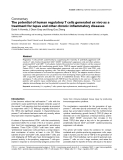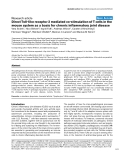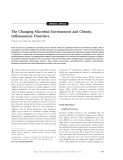
Can Tho Journal of Medicine and Pharmacy 10(7) (2024)
170
IMMUNOGLOBULIN E IN PEDIATRIC ASTHMA:
ADVANCES IN UNDERSTANDING AND MANAGEMENT
Huynh Hoang Khang, Nguyen Dinh Nguyen Chuong, Tran Cong Ly*
Can Tho University of Medicine and Pharmacy
*Corresponding author: tcly@ctump.edu.vn
Received: 24/03/2024
Reviewed: 16/05/2024
Accepted: 22/05/2024
ABSTRACT
Asthma, a pervasive chronic inflammatory ailment of the respiratory system, remains a
global health conundrum. The Global Burden of Disease Study (GBD) of 2019 underscores its
widespread impact, revealing that asthma afflicts 262 million individuals worldwide, translating
into an age-standardized prevalence of 3,416 per 100,000 population. The incidence among
children is particularly alarming, with nearly 14% of the global pediatric population diagnosed
with the condition. This statistic positions asthma as the foremost chronic respiratory disease among
children, a trend that is on the rise, especially across Asia and Europe, as evidenced by the
International Study of Asthma and Allergies in Childhood (ISAAC). Characterized by variable
airflow limitation, bronchial hyperresponsiveness, excessive mucus production, and airway
inflammation leading to airway constriction, asthma’s multifaceted nature complicates its
management. In the realm of immunology, Immunoglobulin E (IgE) has been identified as a pivotal
player. Recognized officially as the fifth class of serum immunoglobulins during the 1968 WHO
International Reference Center for Immunoglobulins conference in Lausanne, IgE’s crucial role in
the pathophysiology of asthma has been rigorously studied. Serum IgE levels, both total and specific,
have been proven instrumental in the diagnosis, treatment, and prevention of pediatric asthma. The
landmark approval of Omalizumab by the US Food and Drug Administration in 2003 heralded a





